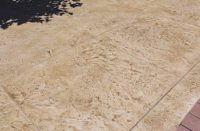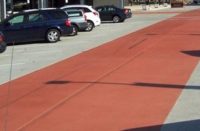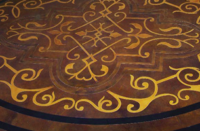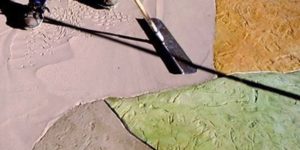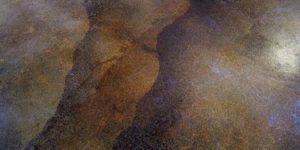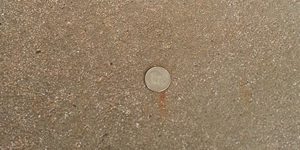Question: I had a stamped concrete patio installed four years ago. Last month I wanted to add more walkways and decking to go with a pool I built over the summer, and I wanted to match the original stamped patio. My installer used a locally available light brown color hardener and a dark brown antique release, same as what was used on the original patio.
There were two different pours four days apart. The first day, it started raining during the process, and application of the release was delayed. Both days were similar in terms of temperature — probably in the 60s. My installer did a couple of stair areas prior to the two pours as well.
I am now left with four different stamped concrete areas, none of which match and none of which I like. I am incredibly frustrated and looking for answers on how to best fix this problem and achieve a uniform color (brown) with darker accents without tearing out the entire project and starting over. I have a new beautiful pool in the middle of horrible patchwork stamped concrete.
If at all possible, I would like to have a new color combination across the entire patio with a mellow terra cotta base color and dark highlights. But at a minimum, my goals are to have the areas match and to improve the color.
This situation is a good example of how environmental influences and timing can impact stamped concrete. I would venture a guess that the installer has stamped concrete for years, and for the most part uses the same process and materials on each pour. While consistency and standard operating procedure can be a good thing, not adjusting to environmental variables can create major issues. Something changed with each of the pours, resulting in the different levels of highlight color.
Stamped-concrete color is comprised of a base color hardener (brown in this case) with a secondary release powder color known as the “accent,” “highlight” or “antique” color (dark brown in your case). The typical process is to use a light base color and dark accent color, which is what you had selected.
The following factors affect the amount of secondary color that will remain after the stamping process:
- How wet the concrete is during the actual stamping process.
- How hard the stamps are forced into the concrete.
- Environmental conditions — rain, sun, wind.
- How and when the release powder is cleaned off. The longer it sits, the harder it can be to remove.
- The type and texture of the stamp tool used. A stamp tool with a rough aggressive texture or deep grout lines will drive more secondary color into the concrete, producing concrete with a greater amount of color variation, while stamp tools with lighter, less aggressive texture will not drive as much color into the concrete, resulting in a finished look with less secondary color.
As a general rule of thumb, you should see 10 percent to 30 percent of the secondary color, depending mostly on the type of stamp tool used. In this case, a medium texture skin was used, which means the patio should be about 15 percent to 20 percent secondary color, with 75 percent of what you see being the base color. Of course there will always be areas of lighter and heavier highlights, which add to the look and make the concrete appear realistic.
In this case it appears that the concrete was stamped with different amounts of surface moisture. The first pour has crisp and distinct color separation between the base and highlight colors. The subsequent pours appear to have been wetter when they were stamped. The fact that the secondary colors are no longer distinct, crisp highlights on a light color base, but a blend of the base color and secondary color, confirms this. When the surface is too wet, the color from the antique release works itself into the wet concrete paste, changing the overall color.
While I have seen this method of stamping accepted, it does not match the first pour. Worse yet, the excess color acts as a bond-breaker when sealers are applied. The resulting sealer failure leads to color flaking, which is very difficult to repair.
In regard to trying to fix this issue, the following are some options. Always test any of these remedies in an inconspicuous place first!
Aggressive cleaning is a good place to start, with household soap and water and a stiff broom, or a walk-behind scrubber. If that does not work, try a mild acid solution (muriatic acid diluted 40-to-1 with water) to break the surface and allow for excess color to be removed. Caution — acid can change not only the base color but also the profile of the concrete. And whenever using acid, you must neutralize the surface before sealing.
If acid and scrubbing do not clean off the excess color, multiple stain and tint options are available. These range from a tinted sealer, which produces a translucent finish for minor color correction, to a solid-color stain system which can produce a new uniform base color with darker color highlights. Reactive acid stains are also an option, but are limited in the number of colors available, and once again produce a translucent final appearance that works well when minor color correction or change is required.
When staining is not an option, one possible solution is an overlay. This could be a microtopping system or a thicker stampable overlay. However, overlay options are not that popular for color correction, as they are the most expensive and invasive in regard to preparation and application.
Lastly, “rip out and replace” is the nuclear option. With the pool, hot tub, walls, garage and other structures, the risk of collateral damage is great. I would suggest working hard with the installer to find a topical fix that everyone can live with.
